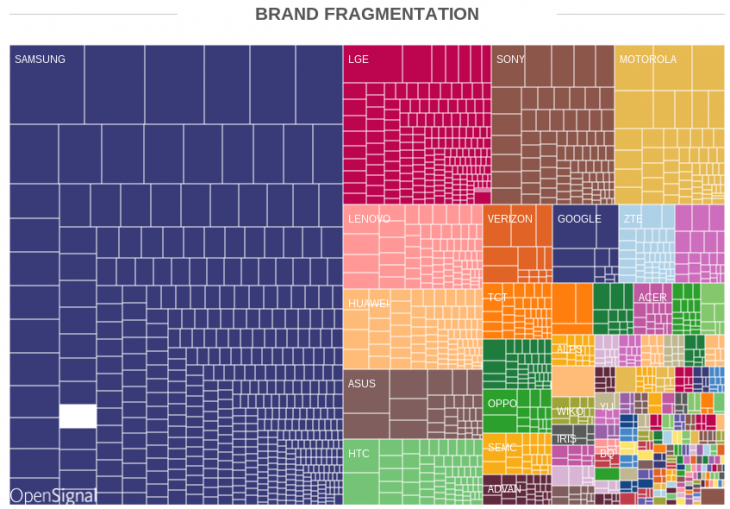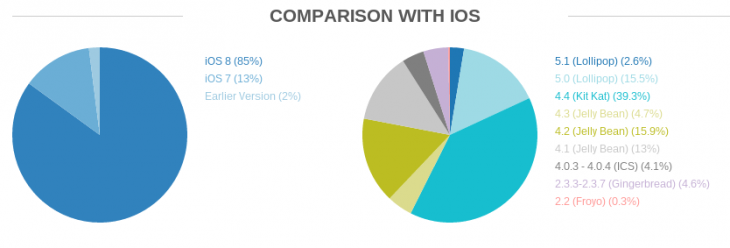
Google likes to release their monthly distribution statistics, but it’s good to get another opinion. Wireless coverage mapping company OpenSignal, has released their latest report on the state of the Android hardware eco-system, and it shows some interesting statistics.
The results are based on Android devices which have downloaded the OpenSignal Android app, which gives the company a fairly good look at the devices that are in play in the market. The results are based on 682,000 devices – a number chosen to ensure consistency with previous years reports based on that sample size – with 24,093 distinct devices surveyed up from 18,796 devices last year from 1,294 distinct manufacturers -1,000 of whom did not appear in OpenSignals first report back in 2012.
The most prevalent manufacturer is still Samsung, with 37.8% of the devices surveyed coming from the Korean behemoth, though the other Korean manufacturer LG is second, with Sony hitting third place. Samsung has lost market share, dropping from 43% last year, though OpenSignal acknowledge that the market has grown, so actual sales numbers may be similar.

Screen size and resolution are often cited as reasons why developers have issues targeting Android for development, but if you want a great read on why this is a myth, check out this post by Russell Ivanovic from Shifty Jelly on why that’s a bogus idea. Still, getting back to the results from the OpenSignal report, they found a size range from the diminutive 2.2″ AW414 Go Smartwatch/phone right up to the 21″ HP Slate.

While screen fragmentation is still somewhat of an issue according to OpenSignal, it’s the API level issue of the core OS that’s more of an issue. OpenSignal found that 95% of devices are running Android 4.0 or above, but still below iOS who have 85% of their devices on the current API level – even if being on that current version doesn’t give feature parity to all devices. Still the good news according to OpenSignal is that ‘We have, however, seen a slight reduction in fragmentation over the past year’, so it appears that it’s improving.

The report is an interesting read, and the graphics sure are pretty. It’s a limited sample size, and may not take into account all markets (though they do say they have devices from China). It’s a limited view from one developer with the summary being that Android shows fragmentation and one manufacturer is dominant, though as we saw from Russell’s breakdown on screens, not everything is cut and dried – so take this with a grain of salt.




